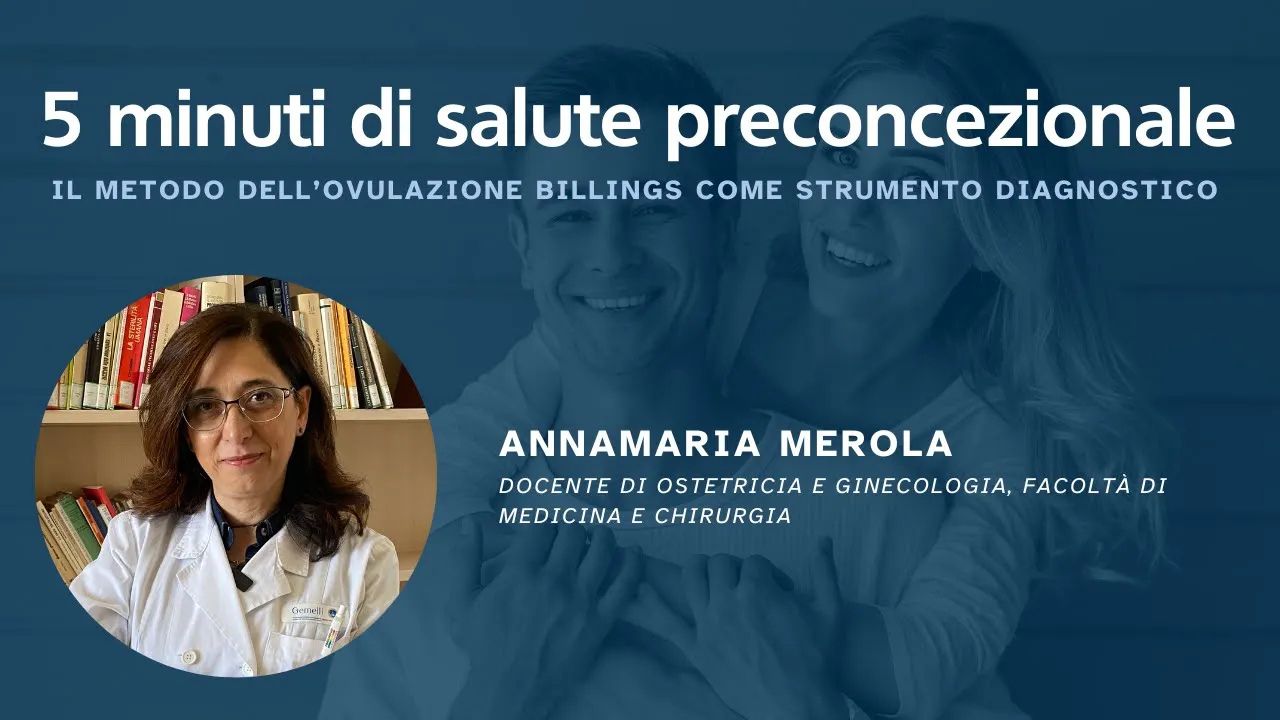The Billings ovulation method as a diagnostic tool
In this video Dr. Anna Maria Merola how important the use of the Billings® Ovulation Method is in the diagnostic field. This method has, in fact, the peculiarity of creating a common "language" between doctor and patient. The woman and/or couple, in fact, who wishes to practice the Billings® Ovulation Method is fully and consciously involved in the diagnostic process. In this way, the specialist can better understand the patient's biological phenomena and understand what may deviate from physiological normality. When a woman is aware of the Method, she can make a self-observation of her cycle and is able to realize if something abnormal is happening. It is, in this way, possible to accompany and guide the woman in the most appropriate way.
The Billings® Ovulation Method is, therefore, of great support in the study of infertility and fertile periods. By knowing the best times for conception, it will therefore be possible to give couples who want a child indications on the most suitable days to seek pregnancy. It is also a very useful method for couples who do not wish to become pregnant: in this way they can refrain from having sexual intercourse in the days surrounding the maturation of the oocyte.
The Billings® Ovulation Method is an important diagnostic tool even in the presence of ovarian polycystosis and irregular cycles. It is possible, in fact, to better understand the timing of ovulation, so that even when menstruation is delayed there is no anxiety. The cycle is not something that "falls from the sky", but follows a precise biological rhythm even when it is irregular. By learning to recognize the different stages of their ovulation, young women can live their being women with much more serenity. Even in premenopause, when the cycle becomes irregular and it is no longer easy to recognize the phases of fertility, the Billings® Ovulation Method is of great support. It also allows a better understanding of pathologies: even during the most trivial infections, such as vaginitis, the woman is able to discriminate a pathological signal from a biological one.
read more
-
Climate change and birth rateClimate change and fertility; A general topic for a particular problem that is still little studied and little investigated. We are all realizing how much climate change impacts our lives and how necessary it is to stem it, but few have carried out an analysis of the correlation between this phenomenon and the ability to procreate. We talk about it with Prof. Walter Ricciardi.
-
Welfare and birth rateThe Welfare State, developed since the nineteenth century to mitigate social risks such as unemployment and illness, has contributed significantly to the lengthening of the average life expectancy and to the change in the role of women in society. This change has influenced the traditional view of the family and has made it more difficult for women to reconcile work and family, also affecting historical birth rates. Prof. Gilberto Turati explains the current situation and the dynamics underlying it.
-
Andrological preventionWhen we talk about andrological prevention, we are probably entering a field unknown to many. Contrary to what happens for the female counterpart. In fact, the average age of the first gynecological examination is 15 years, unlike what happens in males where the first andrological specialist check-up often comes at a much older age, at the onset of clinical symptoms or when trying to get pregnant. Why is prevention important in the andrological field? This is what Dr. Carmine Bruno explains.
